Epigenetics, N-myrystoyltransferase-1 and casein kinase-2-alpha modulates the increased replication of HIV-1 CRF02_AG, compared to subtype-B viruses
- PMID: 31337802
- PMCID: PMC6650493
- DOI: 10.1038/s41598-019-47069-9
Epigenetics, N-myrystoyltransferase-1 and casein kinase-2-alpha modulates the increased replication of HIV-1 CRF02_AG, compared to subtype-B viruses
Abstract
HIV subtypes distribution varies by geographic regions; this is likely associated with differences in viral fitness but the predictors and underlying mechanisms are unknown. Using in-vitro, in-vivo, and ex-vivo approaches, we found significantly higher transactivation and replication of HIV-1-CRF02_AG (prevalent throughout West-Central Africa), compared to subtype-B. While CRF02_AG-infected animals showed higher viremia, subtype-B-infected animals showed significantly more weight loss, lower CD4+ T-cells and lower CD4/CD8 ratios, suggesting that factors other than viremia contribute to immunosuppression and wasting syndrome in HIV/AIDS. Compared to HIV-1-subtype-B and its Tat proteins(Tat.B), HIV-1-CRF02_AG and Tat.AG significantly increased histone acetyl-transferase activity and promoter histones H3 and H4 acetylation. Silencing N-myrystoyltransferase(NMT)-1 and casein-kinase-(CK)-II-alpha prevented Tat.AG- and HIV-1-CRF02_AG-mediated viral transactivation and replication, but not Tat.B- or HIV-1-subtype-B-mediated effects. Tat.AG and HIV-1-CRF02_AG induced the expression of NMT-1 and CKII-alpha in human monocytes and macrophages, but Tat.B and HIV-1-subtype-B had no effect. These data demonstrate that NMT1, CKII-alpha, histone acetylation and histone acetyl-transferase modulate the increased replication of HIV-1-CRF02_AG. These novel findings demonstrate that HIV genotype influence viral replication and provide insights into the molecular mechanisms of differential HIV-1 replication. These studies underline the importance of considering the influence of viral genotypes in HIV/AIDS epidemiology, replication, and eradication strategies.
Conflict of interest statement
The authors declare no competing interests.
Figures
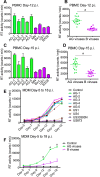
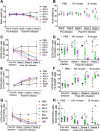
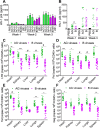

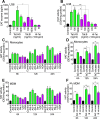


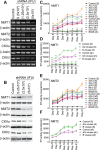
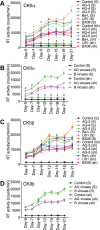
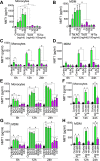
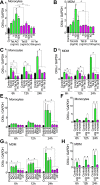
Similar articles
-
The predominance of Human Immunodeficiency Virus type 1 (HIV-1) circulating recombinant form 02 (CRF02_AG) in West Central Africa may be related to its replicative fitness.Retrovirology. 2006 Jul 3;3:40. doi: 10.1186/1742-4690-3-40. Retrovirology. 2006. PMID: 16817969 Free PMC article.
-
Toll-like receptor-3 mediates HIV-1 transactivation via NFκB and JNK pathways and histone acetylation, but prolonged activation suppresses Tat and HIV-1 replication.Cell Signal. 2016 Feb;28(2):7-22. doi: 10.1016/j.cellsig.2015.11.005. Epub 2015 Nov 11. Cell Signal. 2016. PMID: 26569339 Free PMC article.
-
Subtype-specific differences in Gag-protease replication capacity of HIV-1 isolates from East and West Africa.Retrovirology. 2021 May 5;18(1):11. doi: 10.1186/s12977-021-00554-4. Retrovirology. 2021. PMID: 33952315 Free PMC article.
-
Differential Mechanisms of Inflammation and Endothelial Dysfunction by HIV-1 Subtype-B and Recombinant CRF02_AG Tat Proteins on Human Brain Microvascular Endothelial Cells: Implications for Viral Neuropathogenesis.Mol Neurobiol. 2018 Feb;55(2):1352-1363. doi: 10.1007/s12035-017-0382-0. Epub 2017 Jan 27. Mol Neurobiol. 2018. PMID: 28127697 Free PMC article.
-
Differential effects of Tat proteins derived from HIV-1 subtypes B and recombinant CRF02_AG on human brain microvascular endothelial cells: implications for blood-brain barrier dysfunction.J Cereb Blood Flow Metab. 2014 Jun;34(6):1047-59. doi: 10.1038/jcbfm.2014.54. Epub 2014 Mar 26. J Cereb Blood Flow Metab. 2014. PMID: 24667918 Free PMC article. Clinical Trial.
Cited by
-
Attention/Working Memory, Learning and Memory in Adult Cameroonians: Normative Data, Effects of HIV Infection and Viral Genotype.J Int Neuropsychol Soc. 2020 Jul;26(6):607-623. doi: 10.1017/S1355617720000120. Epub 2020 Feb 18. J Int Neuropsychol Soc. 2020. PMID: 32066518 Free PMC article.
-
N-Myristoyltransferase as a Glycine and Lysine Myristoyltransferase in Cancer, Immunity, and Infections.ACS Chem Biol. 2020 Jul 17;15(7):1747-1758. doi: 10.1021/acschembio.0c00314. Epub 2020 Jun 10. ACS Chem Biol. 2020. PMID: 32453941 Free PMC article. Review.
-
CCR5 antagonist reduces HIV-induced amyloidogenesis, tau pathology, neurodegeneration, and blood-brain barrier alterations in HIV-infected hu-PBL-NSG mice.Mol Neurodegener. 2021 Nov 22;16(1):78. doi: 10.1186/s13024-021-00500-0. Mol Neurodegener. 2021. PMID: 34809709 Free PMC article.
-
Low CD4 count was characterized in recent HIV CRF01_AE infection and it rapidly increased to reach a peak in the first year since ART initiation.BMC Infect Dis. 2025 Mar 31;25(1):443. doi: 10.1186/s12879-025-10799-5. BMC Infect Dis. 2025. PMID: 40165131 Free PMC article.
References
-
- Nijhuis, M., van Maarseveen, N. M. & Boucher, C. A. Antiviral resistance and impact on viral replication capacity: evolution of viruses under antiviral pressure occurs in three phases. Handb Exp Pharmacol, 299–320, 10.1007/978-3-540-79086-0_11 (2009). - PubMed
Publication types
MeSH terms
Substances
Grants and funding
LinkOut - more resources
Full Text Sources
Research Materials

